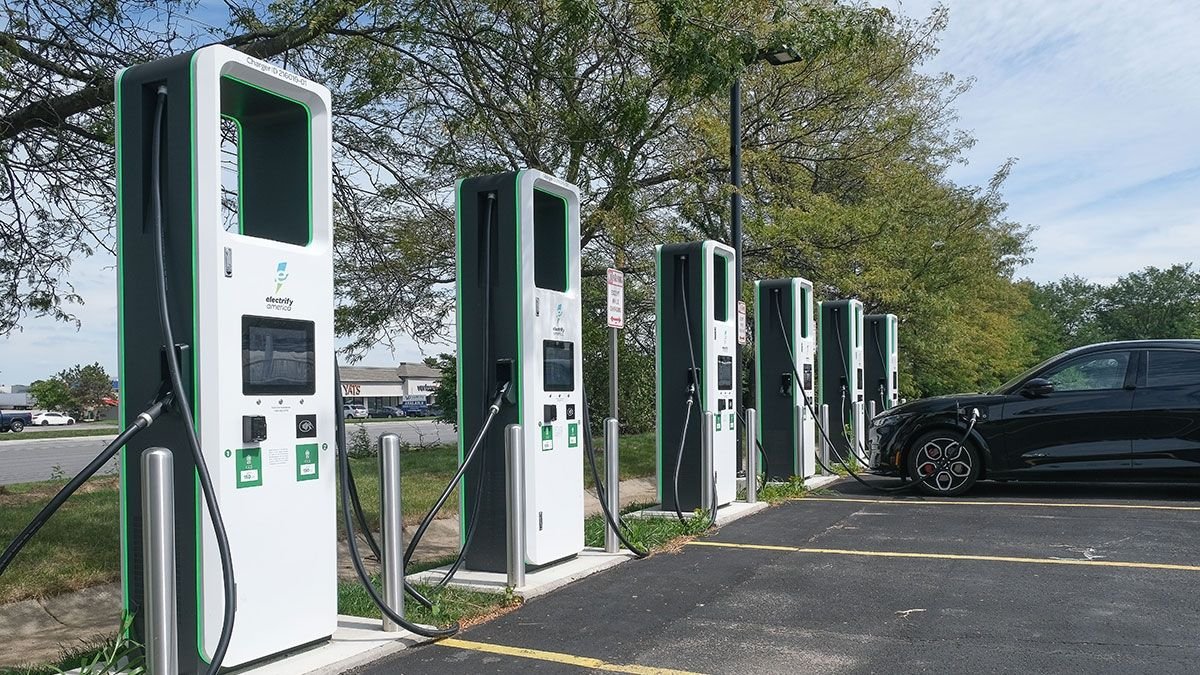Imagine a small town where the future has quietly parked itself, humming softly as it recharges. You’re not stepping into a scene from a science fiction novel, but rather, you’re in Chesterton, Indiana, where an electric vehicle (EV) charging station near Thomas Centennial Park has become a beacon of progress. Since its inception in June 2015, this station has not only charged vehicles but also sparked conversations about sustainability, technology, and the future of transportation.
From Humble Beginnings to a High-Demand Hub
The journey of Chesterton’s EV charging station is a testament to the town’s forward-thinking approach. Funded partly by NIPSCO under its In-Charge Electric Vehicle Program and the town itself, which contributed $3,000 towards installation costs, the station was designed to accommodate two cars simultaneously. Town Manager David Cincoski highlighted its success, noting the station was utilized for 500 hours in December alone, and a staggering 1,400 hours from October through December. This usage rate is 73% higher than other customers, according to the town’s metrics, underscoring an undeniable surge in EV adoption.
The Ripple Effect: Beyond Chesterton
The impact of Chesterton’s EV station extends far beyond its geographical confines. Following its example, the Indiana Dunes Visitor Center on Ind. 49 installed a charging station in 2017, becoming the second public entity in the area to support EV drivers. Furthermore, the Town of Porter is planning to establish three EV charging stations, with 80% of the costs covered by a federal grant. Proposed locations include the Visitor’s Center on Ind. 49, Hawthorne Park, and Lincoln Street in Downtown, signaling a growing network of EV infrastructure.
This expansion is a microcosm of a national trend. With electric vehicle registrations now totaling 2.4 million, and 1.4 million sold last year alone, the United States is witnessing a paradigm shift. The Biden Administration’s push for manufacturers to increase electric vehicle production is both a cause and effect of this shift, as consumer preferences increasingly lean towards eco-friendly and sustainable options. The Global Electric Vehicle Charging Infrastructure Market Analysis Report predicts the market to reach USD 125.39 billion by 2030, emphasizing the critical role of infrastructure in supporting this green revolution.
Challenges and Opportunities
Yet, with growth comes growing pains. The recent maintenance downtime of Chesterton’s EV station highlighted an often-overlooked aspect of EV infrastructure: the need for regular updates and maintenance to accommodate increasing demand. This incident serves as a reminder that while the adoption of electric vehicles presents a pathway to a more sustainable future, it also demands proactive planning and investment in infrastructure to make this future a reality.
On the flip side, this challenge presents an opportunity. As towns like Chesterton lead the way in integrating EV charging stations, they not only contribute to environmental sustainability but also attract eco-conscious visitors and residents, bolstering the local economy. Moreover, the collaborative efforts between public entities and private sectors in funding and expanding EV infrastructure underscore the potential for innovative partnerships in achieving common goals.
As we stand at the crossroads of change, Chesterton’s electric vehicle charging station is more than just a place to power up; it’s a signpost pointing towards a greener, cleaner future. The journey from a single charging station to a network spanning towns and cities is a journey of progress, challenges, and above all, hope for a sustainable world.
[ad_2]
Source link




